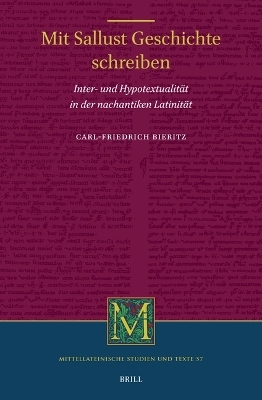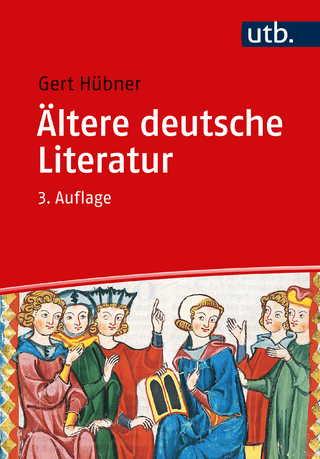
Mit Sallust Geschichte schreiben: Inter- und Hypotextualität in der nachantiken Latinität
Brill (Verlag)
978-90-04-69326-5 (ISBN)
What do writings about the German king Henry IV (Bruno of Merseburg), about the failed conquest of Ireland (Gerald of Wales), about the wars led by Frederick Barbarossa (Rahewin) and about the Dutch fight against the Spanish armies (Famiano Strada) have in common? They demonstrate that whatever tasks Latin historiographers were facing, they strived to write captivating history that gave meaning to complex conflicts, wars, political intrigues and upheavals. In doing so, they all employed a range of Sallustian techniques and narratives. This book explores the reception of Sallust in post-antique Europe, illuminating how it can help us understand what constitutes Latin literature and literature in general.
Carl-Friedrich Bieritz, Ph.D. (2021), studied Latin and Greek literature at the universities of Leipzig and Göttingen, where he was a research assistant at the Department for Medieval and Modern Latin. His works include contributions on Dio of Prusa and Pliny the Younger, Gerhoch of Reichersberg and Latin epic (Louis Petremol, 16th century).
Zitationssystem und Abkürzungen
Interpunktion, Graphie und Übersetzungen lateinischer Texte
1 Vorrede: Wie funktioniert nachantike lateinische Literatur?
2 Das Konzept der Bauform am Beispiel Geralds von Wales
3 Ein Beispiel aus dem Mittelalter: Brunos Saxonicum Bellum
1 Geschichte als Roman: Die Bedeutung der antiken Historiographie
2 Sallust als Inter- und Hypotext (Überblick)
3 Prolog: Sallustische Strukturelemente und Deutungsmuster
4 Die Versammlung der Sachsen in Hötensleben
5 Sallustisches ›Emplotment‹: Heinrich als sallustischer Schurke und der Sachsenkrieg als bellum civile
6 Fazit
4 Politische Sprache und die Rezeption antiker Historiographie: Rahewins Gesta Friderici
1 Vier Rezeptionsprinzipien
2 Imperiale Macht als Inter- und Hypotext
3 Das Römische Reich als Schutz – und Ordnungsmacht der Peripherie
5 Ein Beispiel aus der Frühen Neuzeit: Famiano Stradas Bellum Belgicum
1 Strukturmerkmale
2 Sallustisches ›Emplotment‹: Das Porträt als Bauform und Teil eines narrativen Musters
3 Die Synkrisis Wilhelms von Oranien und Lamorals von Egmont
4 Die Schlacht von Oosterweel (1567): Die sallustische Mauerschau
5 Panoramen als sallustisch-taciteische Bauform
6 Fazit
6 Schlussbemerkung
7 Literaturverzeichnis
1 Ausgaben, Übersetzungen, Kommentare
2 Monografien, Aufsätze, Lexikonartikel
Index
| Erscheinungsdatum | 10.01.2024 |
|---|---|
| Reihe/Serie | Mittellateinische Studien und Texte ; 57 |
| Verlagsort | Leiden |
| Sprache | deutsch |
| Maße | 155 x 235 mm |
| Gewicht | 1104 g |
| Themenwelt | Geschichte ► Allgemeine Geschichte ► Mittelalter |
| Geisteswissenschaften ► Sprach- / Literaturwissenschaft ► Anglistik / Amerikanistik | |
| Geisteswissenschaften ► Sprach- / Literaturwissenschaft ► Literaturwissenschaft | |
| ISBN-10 | 90-04-69326-2 / 9004693262 |
| ISBN-13 | 978-90-04-69326-5 / 9789004693265 |
| Zustand | Neuware |
| Haben Sie eine Frage zum Produkt? |
aus dem Bereich


